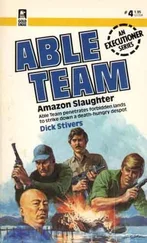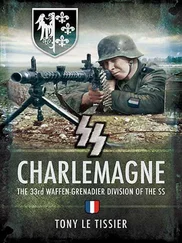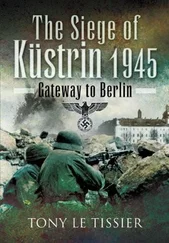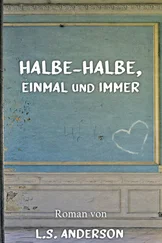XX Corps , under Lieutenant-General Carl-Erik Koehler, which was currently engaged in containing the minor American bridgeheads near Zerbst and consisted of:
- Theodor Körner RAD Infantry Division
- Ulrich von Hutten Infantry Division
- Ferdinand von Schill Infantry Division
- Scharnhorst Infantry Division
XXXXVIII Panzer Corps , under General Maximilian Freiherr von Edelsheim, which constituted the army reserve near Coswig, and consisted mainly of miscellaneous units culled from the Leipzig and Halle areas. [1] Gellermann, Die Armee Wenck , p. 97.
Keitel first briefed Wenck on the general situation as he knew it, and then gave him Hitler’s orders for 12th Army. Keitel waited for Wenck to draft out his orders, as he wanted to take a copy with him back to the Führerbunker and he also wanted to deliver the orders in person to General Koehler’s XX Corps, which was to provide the bulk of the attacking force. At dawn he reached one of Koehler’s infantry divisions, which was already preparing for the operation, and addressed the assembled officers. [2] Wenck, ‘Berlin war nicht mehr zu retten’, p. 64; Gorlitz, The Memoirs of Field Marshal Keitel , pp. 203–4; Tieke, Das Ende zwischen Oder und Elbe , pp. 196–7.
The 12th Army’s specific orders read:
By extensively disregarding the Elbe defences between Magdeburg and Dessau and on the Mulde front between Dessau and Grimma, an assault group of at least three divisions is to be formed in the area west and south-west of Treuenbrietzen with the task of striking at the Russian forces attacking Potsdam and the southern outskirts of Berlin along the line Jüterbog–Brück towards Zossen and Teltow… 9th Army has orders to hold the line Cottbus–Peitz–Beeskow and, if necessary, to keep east of the line Lübbenau–Schwielochsee, in order to release forces for an attack towards Baruth from the east. [3] Lakowski/Stich, Der Kessel von Halbe 1945 , p. 44 [citing Federal Military Archives RH 2/337, Sheet 8f, 23 April 45].
What Keitel failed to realize was that Wenck, unlike his immediate superiors, had formed a very clear appreciation of the situation and had no illusions about the future, which he saw as a simple choice between captivity in either the east or the west. There was no doubt in his own mind which was preferable and he regarded his primary task as that of holding a door open for a general exodus from what would become the Soviet Zone of Occupation.
It became obvious to me that this man [Keitel] and with him the Supreme Commander-in-Chief [Hitler], whom he advised, were long since out of touch with what was happening in this war. After consulting with my staff, I decided to go my own way from then on. We had already started to do so some weeks before, when we stopped demolition squads from destroying supply depots in our area. Now, however, was the time to lead the army guided solely by what we knew ourselves. We could not free Berlin with our forces, but we could help vast numbers of people by opening a way to the west for them with a determined attack. By attacking from the Belzig area towards Potsdam, it would be possible to free the 20,000 troops encircled there. It did not seem impossible for 9th Army to get out of its pocket after such a thrust. Apart from this, the columns of refugees moving behind our front to the west would gain a few extra days time in which to reach the Elbe and escape the Russians. [4] Wenck, ‘Berlin war nicht mehr zu retten’, p. 64; Gellermann, Die Armee Wenck , pp. 80–3; Ryan, The Last Battle , p. 351.
Wenck was fortunate in that many supply barges from all over the country had been trapped and stranded in his sector, so that he had no shortage of supplies, including motor fuel. Although he dutifully reported all this, no attempt was made by the OKW to have this windfall distributed. [5] Gellermann, Die Armee Wenck , p. 48; Ryan, The Last Battle , p. 443.
By 1100 hours Keitel was back in Krampnitz, where he conferred with Jodl and had a brief rest before they set off for the Chancellery together. At the afternoon war conference Keitel reported to the Führer on his trip and General Krebs announced that 12th Army was already on the move. Hitler asked if 9th and 12th Armies had established contact yet, but there was no information available on this point and Krebs was directed to tell 9th Army to get on with it. Before departing, Keitel again tried, without success, to persuade Hitler to leave Berlin. [6] Gorlitz, The Memoirs of Field Marshal Keitel , p. 205.
This conference clearly illustrates the air of fantasy in which Hitler and his staff operated and which Keitel did nothing to dispel. He must have been fully aware that neither army was ready to act immediately and yet said nothing to this effect. In fact, Wenck did not expect to be ready until the 25th, by which time his formations would be redeployed for the attack and he hoped to have recovered some of his armour from west of the Elbe to assist him. In the meantime Wenck was acutely conscious of the threat from the south-east, where 1st Ukrainian Front was making rapid progress in his direction.
At 1300 hours the signal authorising 9th Army’s withdrawal was sent by Army Group Weichsel . General Busse purportedly used this order to implement his own intended and already initiated redeployment towards the west without openly opposing Berlin. To this end, he reported the following measures taken in fulfilment of his task that day:
1. Withdrawal of the eastern and north-eastern fronts on the general line Burg–Butzen–Schwielochsee–Spree in one move during the night of 23/24 April.
2. V Corps to take over command of the eastern front from the right wing (Königs Wusterhausen) to Burg inclusive. V SS Mountain Corps to take over command of the eastern front from Burg to the Kersdorf locks (2 km west of Briesen)…
3. Released forces: 342nd Infantry Division, one reinforced battlegroup from 35th SS Police Division (deployed until now north of Guben), one battlegroup from the Frankfurt Fortress Garrison (about two regiments) already with XI SS Panzer Corps. No artillery as yet.
4. For the intended assault group to unite with 12th Army within the sense of the new plan: 21st Panzer Division’s battlegroup, 342nd Infantry Division, elements 35th SS Police Division, one SS armoured reconnaissance group (105th SS Armoured Reconnaissance Battalion of V SS Mountain Corps under SS-Major Fucker). Earliest start 25 April. [7] Lakowski/Stich, Der Kessel von Halbe 1945 , p. 46 [citing Federal Military Archives RH 19 XV/10, Sitrep of 22 April 45, Sheet 15].
Busse later claimed: ‘Thus my headquarters had freedom to adjust its forces itself with a view to a rapid redeployment for a break-out to the west.’ However, his subsequent behaviour indicates that he was in fact still attempting to comply with superior orders. Unlike Generals Heinrici and Wenck, he failed to see that his primary concern should have been the fate of his men and the accompanying refugees dependent upon him.
The problem here was that Busse, like many of his contemporaries, basically owed his successful military career to Hitler, to whom he was now in thrall, a situation further exacerbated by the consequences of the failure of Colonel Claus Graf Schenk von Stauffenberg’s assassination plot of 20 July 1944, which had imposed an even greater subservience on commanders and the General Staff. A major obstacle to independent action, as previously mentioned, was the personal oath of allegience to Adolf Hitler that the obsequious commander-in-chief, General Werner von Blomberg, had imposed on the Wehrmacht immediately following the death of President von Hindenburg on 20 August 1934, which many continued to think of as binding, even when the failure and criminality of the regime had been exposed.
Читать дальше












